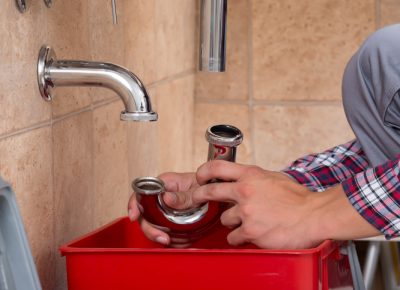 Among the biggest problems that can occur in your home’s plumbing are clogs and backflow issues. At BMB & Sons, we specialize in removing clogs and enabling your plumbing system to run efficiently and safely again.
Among the biggest problems that can occur in your home’s plumbing are clogs and backflow issues. At BMB & Sons, we specialize in removing clogs and enabling your plumbing system to run efficiently and safely again.
Your home’s plumbing system works by keeping wastewater separate from your potable water. Backflow occurs when the wastewater is somehow backing up in your plumbing and entering your supply pipes, i.e., your potable water. As clogs stop wastewater from exiting, wastewater becomes mixed with your potable water.
What causes backflow? It could be a result of issues in the pressure system. Backflow can develop if the pressure becomes imbalanced on either the supply side or the outgoing wastewater side of the system.
Your system could also have developed preventer breaks. Preventers are a check valve that keeps the sewage from flowing back into the system. These devices stop any kind of wastewater from backflowing into your potable water. If a backflow preventer is poorly installed or it develops a leak, the device can malfunction and allow wastewater into your system.
A clog occurs when an item of some sort finds its way into the path of this system. Your home’s pipeline is similar to the layout of a tree: there are primary and secondary “branches” of piping that guide the water throughout the home. If some part of the water or sewer main is clogged, the issue likely affects the whole household. If something is stuck in one of the sublines, whatever is happening will more than likely be isolated to one area. When a clog occurs, it’s important to identify where it found its way so we can properly dislodge it.
If you see any of the signs below, contact BMB & Sons today. We will provide you with hassle-free, same day service, and we’ll find the source of the clog and remove it.
Signs of a Clog
- When water or sewage backs up into low spots, such as basement toilets and showers.
- Gurgling noises as other plumbing functions take place. Normally, when water flows unimpeded through a pipe, it shouldn’t make a lot of noise. If a sewer or water pipe has a clog, water hits it and releases oxygen, causing bubbles that make noise and possibly odorous smells.
- Slow drains in the shower, tub or sink.
- Poor pressure in parts or all of the system, noticeably in the sink or shower and a weak toilet flush.
- Utilities that use water reacting to each other, such as the toilet making noise when the washer stops or starts.
- Foul odors in bathrooms or other high traffic plumbing areas, which sometimes means there’s an accumulation of gunk within the drain.
- Water backing up in drains as other utilities are used.
- Running water in the sink producing bubbles in the toilet, which could indicate that the problem is in the sewer main.
- The system gets overwhelmed easily — for example, when only one utility at a time can drain well.
- Water gathering around the floor drain in a basement, saturated soil, or pooling water in the yard.
